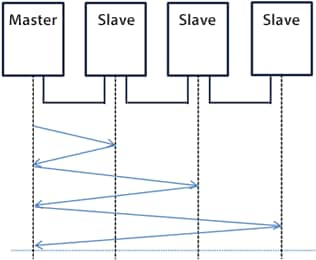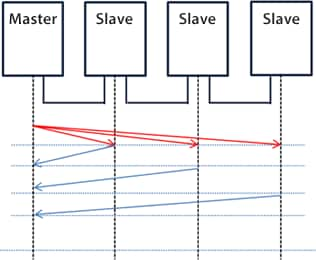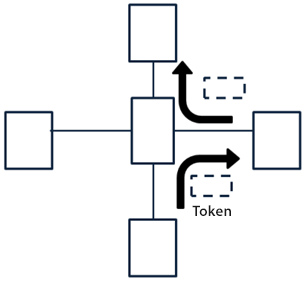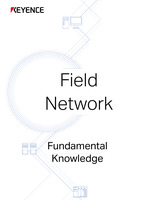Communication Methods
For any given network, a wide variety of communication methods can be used, including periodically sending commands from a master device and waiting for responses, or passing data transmission permissions (tokens) to each device, oftentimes with multiple combinations being used. This page introduces each communication method in detail.
- Master/slave method
- Multi-master method
- Polling method
- Token-passing method
- Producer/consumer method
- On-the-fly method
Master/slave method
In this method, when data is sent and received by multiple devices, one specific device (a master device) transmits commands to the other devices (the slave devices) and waits for responses from those devices.
Response methods can vary for each network, including issuing commands to and waiting for responses from each slave in turn, or issuing commands to all slaves at once and waiting for each slave to send a response.


Multi-master method
With the multi-master method, multiple master devices are used to communicate with slave devices on a single network. In networks that support the multi-master method, the topology must be carefully devised and the timing must be synchronized to prevent data collisions due to timing control failures.
Polling method
This method is often used in combination with the master/slave method. As the master device checks in turn for transmission requests from the slave devices, data is sent from any devices with a current transmission request. After transmission is complete, the master device sends a transmission request acknowledgment to the next slave device.
Token-passing method
With this method, transmitted data is managed using transmission permissions—called tokens—that are rotated in turn within the network to avoid collisions. Controlling the time permitted for token rotation makes it possible to define the refresh cycle time.
If a token is sent to a device that is no longer in the network, the token will be automatically transferred to the next device after the specified time has elapsed.

Producer/consumer method
In this method, data is exchanged between a producer and a consumer, with the producer creating and transmitting the data in order. On the consumer side, the IDs stored in the received data are checked and only the data with the relevant ID information is processed as needed. This method eliminates the need to send slave-specific commands and reduces the amount of data that must be transmitted by checking the relevant IDs so that only the relevant IDs are processed on the consumer side.
On-the-fly method
With on-the-fly communication, when a device receives data, it reads the data in the read area allocated for the address, writes the data in the write area, and sends the data to the next device. This method offers efficient communication by maximizing how the information from a single data source is used.






